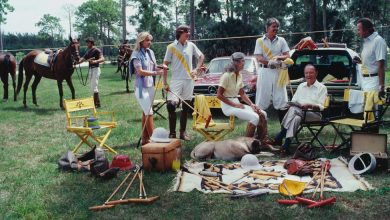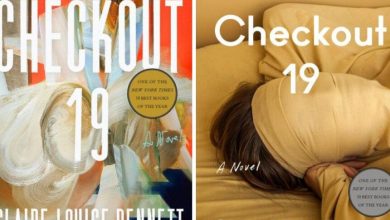A Sculptor’s Disappearance, Narrated by Her ‘Less Beautiful’ Sister

Joyce Carol Oates’s overarching thematic obsession is violence and its ripple effects, treated brilliantly in novels like “A Book of American Martyrs”(2017) and with maddening results in others (see: last summer’s “Babysitter). In the 1980s, she began writing genre fiction — first under the pseudonyms Rosamond Smith and Lauren Kelly, then, later, under her own name.
Her crime novels, I’ve found, falter more consistently than they succeed. The latest, 48 CLUES INTO THE DISAPPEARANCE OF MY SISTER (Mysterious Press, 305 pp., $26.95), is the story of Marguerite, a beautiful young sculptor who has vanished from her family’s home, “a stately old English Tudor,” in upstate New York. Gigi, her resentful, “less beautiful, less talented” sister, relates the story of Marguerite’s disappearance in fragmented fashion, beginning with the discovery of a “flimsy white silk Dior ‘slip dress’” pooled on the bedroom floor and footprints left by “ankle-high mahogany dark leather boots” in the backyard. But what could have been an unnerving tale is marred by truly puzzling stylistic choices (so many parentheticals, one after another!). Still, even a subpar Oates novel unmoors me and makes me wonder what will arrive next.
Filled with the scent of sandalwood incense, and studded with the lush, jeweled colors of vibrant gardens and embroidered silk saris, Harini Nagendra’s debut mystery, “The Bangalore Detectives Club,” set in 1920s India, was showered with accolades last year. The novel stood out for its sparkling writing, sound plotting and historical research, though I thought it had some first-book wobbles. I’m pleased to report that its follow-up, MURDER UNDER A RED MOON (Pegasus Crime, 290 pp., $26.95), exceeds all my expectations.
Here, Kaveri Murthy, the 19-year-old wife of a local doctor, finds herself sleuthing at the behest of her overbearing mother-in-law, Bhargavi, who directs her to investigate embezzlement at a friend’s business. Minor crimes quickly turn major when the friend’s husband, a millowner, is murdered, and Kaveri, armed with a magnifying glass, must use all of her mathematical and methodological acumen to root out what happened. There is no shortage of suspects, beginning with the millworkers the man had so cruelly exploited.
Against a roiling political backdrop — the women’s suffrage movement is growing, as is anti-British sentiment — Kaveri and Bhargavi come to a deeper understanding of each other.
Antonia Scott, the star of Juan Gómez-Jurado’s trilogy opener, RED QUEEN (Minotaur, 384 pp., $27.99), checks all of the Strong Female Character boxes. Stunning beauty, brilliant mind, innovative detection, cascading traumas: all present and accounted for. As the novel begins, the half-Spanish, half-British Antonia, who “has a black belt in self-deception,” has secluded herself in her residence, refusing to accept new cases as a consulting detective, and generally withdrawn from society.
Enter Jon Gutiérrez, a policeman carrying the weight of multiple personal and professional disgraces, who’s inexplicably been given a chance at redemption. The catch: He has to coax Antonia out of retirement to work with him on a series of especially heinous murders. It’s a slightly banal setup, but no matter. What Gómez-Jurado excels at, as conveyed in Nick Caistor’s brisk translation, is pacing of the breakneck variety. Short chapters, funny asides, lethally potent descriptions: They all contribute to a frenetic page-turning momentum that overrides the lack of character development. If you don’t take “Red Queen” too seriously, you’ll have great fun reading it.
There were moments, early in Jesse Q. Sutanto’s VERA WONG’S UNSOLICITED ADVICE FOR MURDERERS (Berkley, 333 pp., $27), that I was certain I wouldn’t finish it. The titular Vera, a 60-year-old San Francisco shopkeeper who is often abrasive and boundary-busting, is convinced the man whose body has turned up in her sparsely frequented tea shop was murdered, and that she’s surrounded by suspects. She’s so positive that the police don’t know what they’re doing — they’re not even dusting for fingerprints! — that she filches a flash drive from the dead man’s hand. Yes: I knew how this one would go.
Readers, I’m so glad I persisted. Because like the ragtag group of younger people whose lives Vera infiltrates, ostensibly to solve the crime, I grew to adore this woman mired in loneliness and looking for connection to ease the “kernel of sadness” in her heart. The murder victim’s bullied twin brother, his creatively thwarted wife, an artist he conned and an immigrant he exploited all reveal their own flaws and strengths as they grow closer to Vera, who doggedly continues her detective work even after the police have stopped working on the case:“Vera only has a vague theory for now, and that vague theory may be colored and jumbled by her growing affection for everyone involved, but she’s not about to let it stop her. And anyway, isn’t this how young people are told to live their lives now? To fake it until they make it? She’s going to do just that. … By the time she’s done, she’s sure she will have figured out who is the real killer.”





